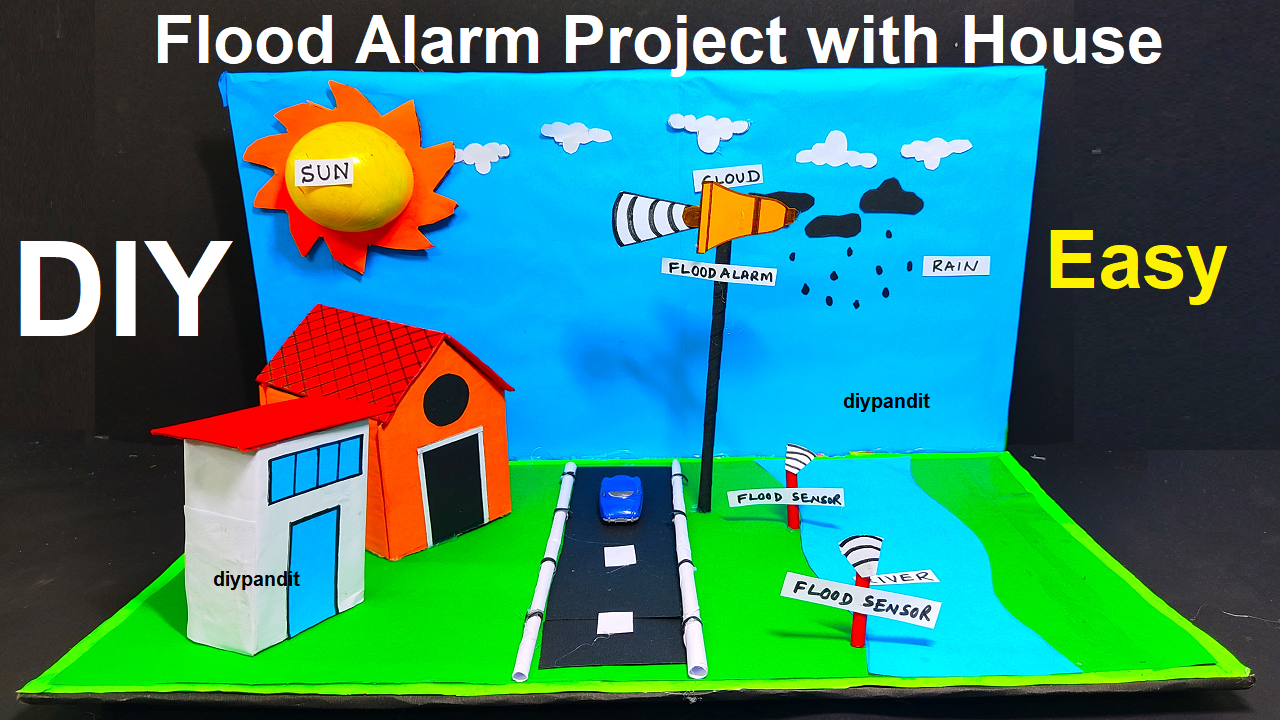Creating a flood alarm project with a house for a science exhibition involves building a simple yet effective model to demonstrate flood detection.

Here’s a step-by-step guide for your project:
Materials Needed:
- Small model house (you can use a toy house or create one from cardboard)
- Plastic container or tray
- Water sensor or moisture sensor
- Arduino board
- Cardboard/ Paper Buzzer or alarm
- Paper Jumper wires
- Paper Battery pack or power source
- Glue or tape
- Colored paper or markers (optional for decorating the model house)
Steps to Create the Flood Alarm Project:
Step 1: Prepare the House:
- If using a cardboard house, assemble and decorate it. Ensure that it has a flat base.
Step 2: Set Up the Plastic Container:
- Place the plastic container or tray next to the house. This will represent the area susceptible to flooding.
Step 3: Attach the Water Sensor:
- Connect the water sensor or moisture sensor to the Arduino board using jumper wires. Secure the water sensor inside the plastic container.
Step 4: Connect the Alarm:
- Connect the buzzer or alarm to the Arduino board using jumper wires.
Step 5: Program the Arduino:
- Write a simple Arduino program to monitor the water sensor. When the sensor detects moisture (indicating water/flood), it should trigger the buzzer/alarm.
Step 6: Attach the Arduino to the House:
- Secure the Arduino board and the buzzer inside the model house. Ensure that the water sensor is placed in the plastic container.
Step 7: Power the System:
- Connect the Arduino board to the battery pack or power source.
Step 8: Test the System:
- Pour a small amount of water into the plastic container to simulate a flood and test if the alarm activates.
Step 9: Display and Explain:
- Set up your flood alarm project at the exhibition table.
- Explain how the water sensor detects moisture, triggering the alarm to simulate a flood warning for the model house.
This flood alarm project provides an interactive and educational way to demonstrate flood detection using a simple model house.
It’s suitable for science exhibitions and helps raise awareness about the importance of early warning systems in flood-prone areas.

